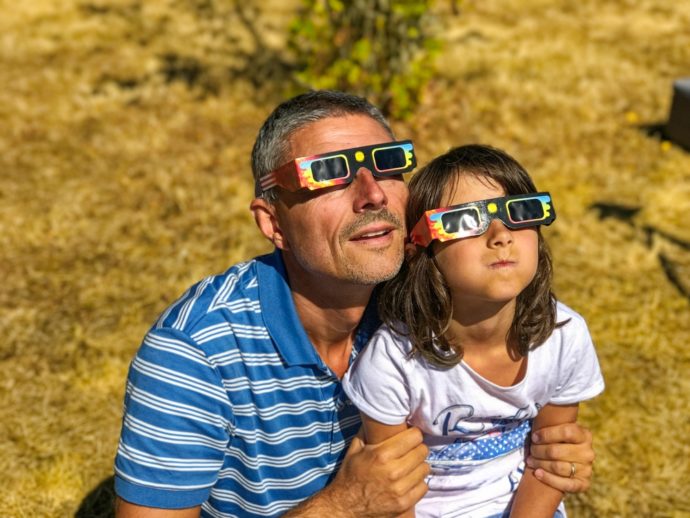Imagine the excitement of witnessing the sun disappear completely in the middle of the day, replaced by a breathtaking ring of light! On April 8, 2024, parts of North America will be treated to a total solar eclipse, a celestial event that has captivated humanity for centuries. This is a unique opportunity to spark children’s curiosity about science and space exploration, right in their backyard.
Family, friends and schools will gather to view the moon as it completely obscures the sun’s disc into a brief period of twilight-like darkness. For some, this will be a first, and for others, another memory to cherish.
Here are a few tips on where and when to view it, what to expect during totality, and how to observe it safely.
What is a Total Solar Eclipse?
A total solar eclipse occurs when the moon aligns perfectly between the sun and Earth, casting a complete shadow on a narrow path across the Earth’s surface. This path, known as the path of totality, is where observers will witness the sun being entirely blocked out, revealing the sun’s spectacular wispy outer atmosphere.
How Can You View the Eclipse Safely?
Looking directly at the sun, even during a partial eclipse, can permanently damage your eyes. The only safe way to view the eclipse directly is with specially designed solar filters that meet international safety standards. Please use precaution when viewing the eclipse directly.
Where and When Can You See the Eclipse?
Our view of the eclipse will trace a path diagonally across North America but will start in Mexico and end in Canada. That is a huge span and something remarkable for the bare eyes to see. Totality will be visible for a few minutes along this path, which includes parts of Texas, Oklahoma, Arkansas, Missouri, Illinois, Kentucky, Indiana, Ohio, New York, Vermont, New Hampshire and Maine. A partial eclipse will be observable from most of North America.
If you want even more specific locations, you can find them on NASA’s eclipse website.
What Should You Expect During Totality?
As totality approaches, the temperature may drop slightly, and animals may exhibit unusual behavior– make sure to keep pets calm despite all the excitement. Eventually, the sun will disappear completely, replaced by the brilliant white corona. This totality period will only last a few minutes, but it’s an unforgettable experience.
This total solar eclipse is a rare opportunity to witness the awesome power of celestial mechanics. By planning ahead and following safety precautions, you can ensure a safe and unforgettable experience under the darkened sky.





